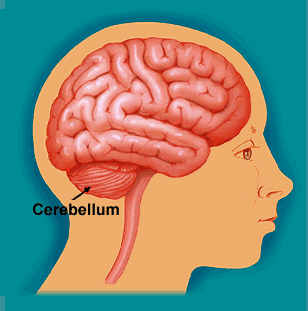Brain is the central part of the nervous system. The brain is protected inside the skull. It is covered by the meninges, a three-layered membrane. The cerebrospinal fluid is filled within the inner membranes of meninges and the ventricles of the brain. The cerebrospinal fluid formed from the blood is reabsorbed into the blood. The functions of the cerebrospinal fluid are to provide nutrients and oxygen to the tissues of the brain, regulate the pressure inside the brain and to protect the brain from injuries.
A. Cerebrum
• the largest part of the brain.
• numerous fissures and folds are seen.
• The grey coloured outer part of cerebrum is called Cortex and the white coloured inner part is called Medulla.
• centre of thought, intelligence, memory and imagination.
• evokes sensations.
• controls voluntary movements.
B. Cerebellum

• the second largest part of the brain
• seen behind the cerebrum as two flaps.
• fissures and grooves are present.
• coordinates muscular activities and maintains equilibrium of the body.
C. Medulla oblongata
• the rod shaped medulla oblongata is seen below the cerebrum, located near the cerebellum.
• controls involuntary actions like heart beat, breathing etc.
D. Thalamus
• situated below the cerebrum.
• acts as relay station of impulses to and from the cerebrum.
• analyses impulses from various parts of the body and sends the important ones to the cerebrum
E. Hypothalamus
• situated just below the thalamus.
• plays a major role in the maintenance of homeostasis
Learn more:

